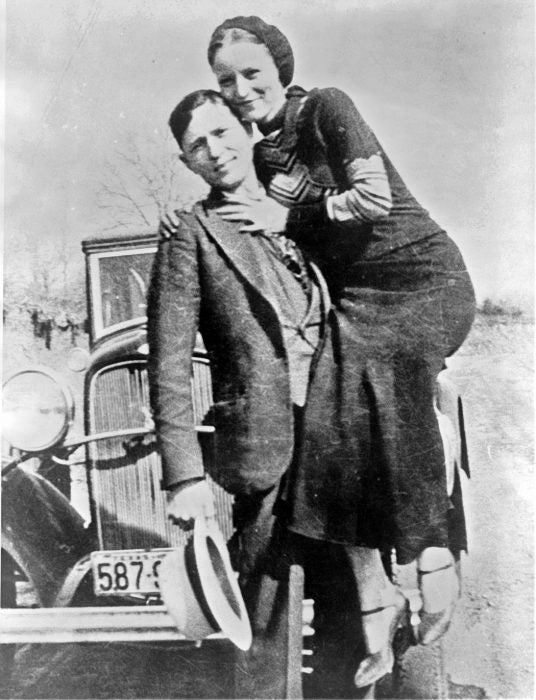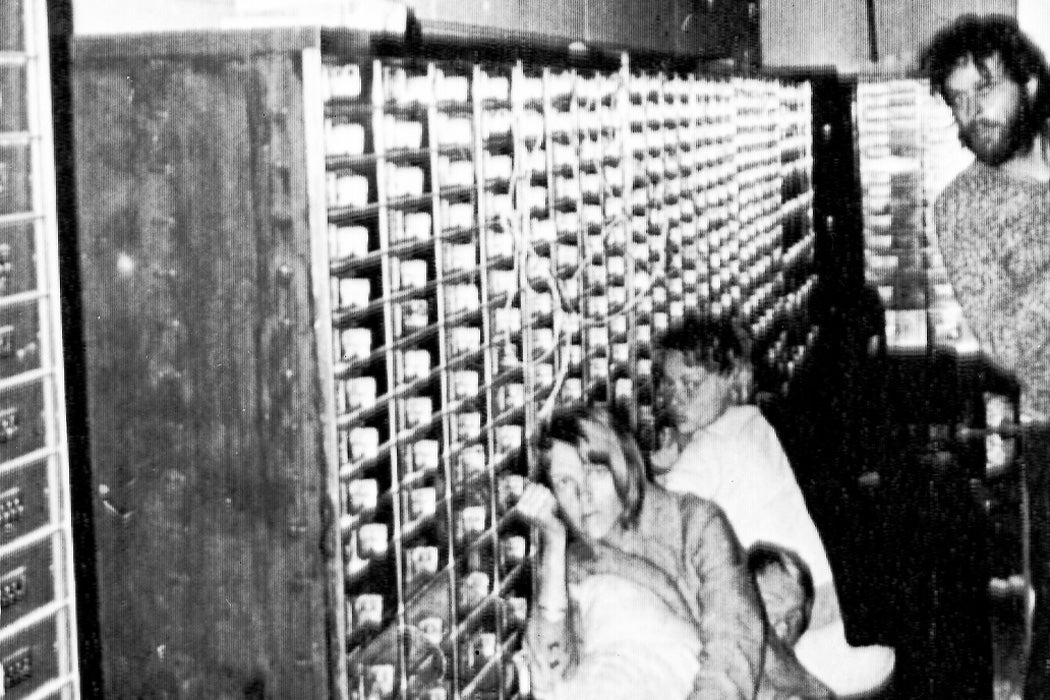Jan-Erik Olsson had a plan. The escaped convict entered the Sveriges Kreditbank in Stockholm’s Norrmalmstorg square on a summer day in 1973. He was armed with a machine gun, explosives, rope, and a transistor radio. This was a stick-up the likes of which Sweden had never seen. In a fake American accent, Olsson instructed the police to deliver $710,000, along with a getaway car and his imprisoned friend, Clark Olofsson. If they failed to meet each of his demands, he promised to harm the four bank employees he had taken hostage. They all trusted him more than the police.
Audio brought to you by curio.io
The so-called Norrmalmstorg robbery would end six days later, with Olsson in custody. The four hostages emerged unharmed, with no ill will toward their captor. The police, they believed, were the ones who had actually endangered their lives. This unusual sympathy inspired the pop psychology phrase “Stockholm syndrome,” a label that was quickly attached to other cases—for instance, to the notorious 1974 kidnapping of newspaper heiress-turned-bank robber Patty Hearst. But the original Stockholm hostage crisis revealed much more: Due to Olsson’s unique disguise, the robbery served as a commentary on the American outlaw—and demonstrated how poorly this swaggering figure translated.
Weekly Digest
Olsson was born and raised in Sweden. When he arrived at the Kreditbank on August 23, however, he didn’t speak in his native tongue. He barked orders in English, obscuring his identity. According to Daniel Lang’s New Yorker report on the robbery, he also donned “a pair of toy-store spectacles and a thick brown wig; his cheeks were rouged; and his reddish-brown mustache and eyebrows were dyed jet black.”
But the American accent proved to be perhaps the most crucial piece of his cartoonish disguise. He announced his presence to the customers and tellers at the bank with a round of fire, directed at the ceiling, and a shout: “The party has just begun!” This was a line Olsson had lifted from “an American movie about a convict on the loose,” as Lang wrote, though the exact film was never specified. It wasn’t the only bizarre allusion to U.S. pop culture that day. When a plainclothes police sergeant arrived on the scene, Olsson threatened him at gunpoint, teasing him to sing a song. The sergeant chose Elvis Presley’s “Lonesome Cowboy,” assuming the (seemingly) American man before him would enjoy a familiar tune.
Through this assumed identity, Olsson was telegraphing a propensity for violence—one that was largely foreign to Sweden. As a Stockholm University report on Nordic crime from 1950 through 2010 notes, robberies were “more or less unheard of in these countries” at the end of the 1950s. Robbery was still not quite a regularity in Sweden by 1973, though it was climbing dramatically. According to the report, the number of robberies in the country had risen from 469 reported offenses per 100,000 people in 1960 to 1,511 in 1970. Another decade later, that number would jump to 3,427.
This was part of a general increase in violent crime that emerged in Sweden in the mid-1960s, but the trend hadn’t fully registered yet—or at least Olsson didn’t believe it had. He later told Lang from prison that he had banked on “a deep-seated aversion to violence” in Sweden, assuming that the police would grant him enormous concessions to avoid bloodshed. He wasn’t wrong. Per Olsson’s instructions, Swedish law enforcement released Olofsson—who was at the time serving a six-year prison sentence in a Norrköping penitentiary—and escorted him into the bank, where he would serve as Olsson’s accomplice. They also procured a blue Ford Mustang for the pair, along with the $710,000 ransom. The only point on which the police and Swedish government would not budge was the hostages. Olsson wanted them in the car with him, outfitted with helmets and bulletproof vests. The police refused, leading to the six-day stand-off.
The robbery garnered wall-to-wall news coverage in print and on television, where the so-called “bank drama” dominated the evening broadcasts. On Lang’s account, Swedish families would gather outside the Kreditbank, “trying to imagine what was going on behind it, puzzled that their country, stable and enlightened, should provide the setting for so unseemly an episode, prevalent though hostage-taking might be elsewhere.” But if Swedes were struggling to grasp how this kind of crime could happen in their home, they could easily picture it happening somewhere else. As one of the hostages, Kristin Ehnmark, told Lang: “I believed I was seeing something that could only happen in America.”
What did Ehnmark—and other Swedish citizens—think was happening in America? The U.S. had long enjoyed a fantastical reputation abroad, as a place with “gold in the streets, of opportunity and unlimited freedom,” Franklin D. Scott, a Northwestern University history professor, wrote in 1954. But with the arrival of the Vietnam War, the spate of political assassinations of the 1960s, and the general turmoil brewing between the counterculture and establishment, the American dream was turning into an American delusion. This reckoning was also bringing darker aspects of the U.S. tradition to light. “For much of our history, and for a great many people, there is no doubt that America has had an unreal, almost fictional aura about it,” scholar G.D. Lillibridge wrote in 1965. “Even American violence—the Indian on the warpath, the gunman of the West, the gangster of the city—lost its brutal reality when viewed across the Atlantic or the Pacific, and acquired a romantic appeal not granted, for instance, to the Spanish Inquisition,” Lillibridge noted.
The “romantic appeal” is most easily understood through the American folk legends surrounding Jesse James, Billy the Kid, Sam Bass, and Charles Arthur “Pretty Boy” Floyd. These men were all real, but years of mythologizing turned them into beloved, fictionalized characters that symbolized American individualism. The outlaw, as the folklore scholar Richard E. Meyer defines it, is quite literally “one who stands outside of and defies the law.” But for this uniquely American archetype to work, he must be softened into a Robin Hood figure, a man of the people who never attacks the common folk, only corrupt oppressors. Even then, the outlaw deploys violence sparingly, sticking to an unusual yet rigid moral code. “Only certain types of extralegal activities are acceptable,” Meyer writes.
For Meyer, “[w]hen the lawbreaker transcends these limitations he ceases to be an outlaw and becomes a criminal, i.e., one whose acts are unmitigatingly reprehensible to all sectors of society. Holding up banks, trains, or Brinks armored cars is outlaw activity; it is acceptable to the folk mind, which will even go so far as to countenance an occasional homicide, providing it is clearly in what might be termed the ‘line of duty.’ But cold-blooded and calculated murder, crimes against women and children, acts of sadism and terrorism—these constitute criminal activity and the supporters of outlaw-heroes would be as quick to condemn their practitioners as would any other segment of society.”
In reality, several American outlaws did not pass this test. According to folklore expert Kent L. Steckmesser, Jesse James “committed several cold-blooded murders,” while Billy the Kid and his gang picked off a Lincoln County sheriff and a deputy sheriff “from behind the cover of an adobe wall,” in an act that was clearly not self-defense. These historical details were usually dropped from their narratives to maintain their popular image as folk heroes. But by the time of the Norrmalmstorg robbery, violence was becoming less of a dealbreaker for outlaws in the American imagination.

Consider Bonnie and Clyde, the groundbreaking 1967 film that retold the legend of Bonnie Parker and Clyde Barrow. These Depression-era criminals were credited with a string of bank robberies, kidnappings, jailbreaks, and a suspected 13 murders—and while the movie obscured some aspects of their story, it did not shy away from their violence. Bonnie and Clyde features multiple shootouts with law enforcement, as well the callous killing of a civilian. Clyde shoots a bank teller in the face. Bonnie and Clyde eventually die in a bloody hail of bullets, in a scene that marked one of the first major uses of squibs in Hollywood history. The violence was thus no small part of the movie; it was unavoidable and kind of the point. This was underlined by the tagline: “They’re young… they’re in love… and they kill people.”
These kind of antiheroes—who represented an updated version of the outlaw folk figure, with less smoothing around the edges—became increasingly visible in Hollywood as a new generation of filmmakers pumped out bolder and bloodier movies, many with roots in U.S. history. Butch Cassidy and the Sundance Kid cast the charismatic Paul Newman and Robert Redford as the infamous outlaws, who, like Bonnie and Clyde, went out in a siege of gunfire. Badlands fictionalized the 1950s murder spree of teen couple Charles Starkweather and Caril Ann Fugate. Soon even the movie cops were starting to resemble outlaws, as Dirty Harry and The French Connection’s Popeye Doyle dispensed a brutal and completely illegal form of justice.
While it’s unclear which “American movie about a convict on the loose” Olsson saw before he burst into the Kreditbank, clearly, he had plenty of options. But what happens when someone takes an outlaw figure from American history, folklore, and popular culture and transfers that idea to a totally different country? The Norrmalmstorg robbery stunned Sweden, and few found anything “heroic” or folksy in Olsson’s crime. Kaj Hansson, another Swedish thief who the police initially believed was behind the Norrmalmstorg heist, actually called them from hiding to “indignantly den[y] that he would stoop to so foul a deed as taking hostages,” Lang reported.
Over the course of the six days, Olsson also soured on his American caricature. He dropped the accent and disguise as the hours turned into days, and was soon conversing candidly with his captives and accomplice in Swedish. Though he repeatedly threatened to harm the four bank employees, he didn’t follow through with any of his promises. Despite his bravado and criminal history, Olsson, it appears, shared at least some of the “deep-seated aversion to violence” he presumed in the police. He was not, in the end, an American outlaw. He was Swedish, and no amount of cowboy cosplay could hide that.







